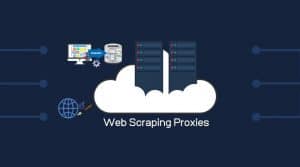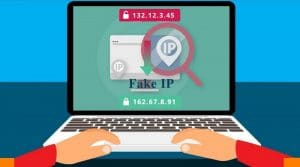What do you know about click fraud? As an advertiser, publisher, or even a site owner, this can have a devastatingly negative effect on your campaigns. Come in now to discover all you need to know about click fraud and how to prevent it.

It has been estimated that over 40 percent of web traffic is from bots. But what do these bots do? While some of them are good bots, the larger percentage of bots are bad with malicious intent. One of the illegal act bot traffic engage in is click fraud.
According to Jupiter Research, $68 billion was lost to ad fraud in 2022, a huge spike from $19 billion in 2018. If you are an advertiser or publisher, you have to be aware of click fraud to avoid wasting your money or getting into legal troubles and losing business.
In this article, we will open your eyes to the world of click fraud and how it is perpetrated. This fraudulent act is so lucrative that the bad actors are never going to stop. Instead, they are developing new tactics to make their actions undetectable and more lethal. It is your duty to protect yourself from their fraudulent acts, and in this article, you will be shown how to do that.
What is Click Fraud?

Click fraud is a type of fraud that occurs on the Internet where users (or bots)click on ads and listings in other to claim ad revenue, influence their ranking on a list, or even hurt the advertiser, among other reasons. In a bit to describe click fraud, we should know that not all there is what ad publishers call invalid clicks, which are unintentional.
In the case of click fraud, the perpetrator is intentionally clicking to hurt you or commit some form of fraud. Any form of a click, whether on ads, like buttons, or even on search engines, that is done intentionally but not with the legit aim of interacting with the content is referred to as click fraud.
This is prevalent today on the Internet because of the fraudulent amount to be made, the opportunity to hurt competitors, and the ability to influence and pass political and social messages. Click fraud is illegal, especially in the case of PPC fraud, and could land perpetrators in legal trouble. However, the actors have developed means to help them remain undetectable to continue carrying out their acts.
How Does Click Fraud Work?

While click fraud can be carried out by one user, it is unlikely that he or she will be able to generate any meaningful result that would warrant the time, energy, and risk involved. Instead, click fraud is perpetuated using bots, click farms, and botnets. There are slight differences depending on whether a single bot, botnet, or click farm was used. However, the fundamentals still remain the same as the major power is in their numbers.
The hacker identifies the element to be clicked. This can be an ad in the case of PPC fraud, a listing in the case of search engine CTR manipulation, and the like button of a post on social media. With the target identified, the bots or users in click farms are then made to visit the page, with a good number of them visiting the page without doing anything. Only a few of the visits will result in a click in a bid to make things natural.
If all visit results in a click, the anti-spam systems will raise the alarm for scrutiny, and they wouldn’t want that. Take, for instance, the average CTR for Google Search Ads is 4 – 6 percent. While getting above this is normal, getting, let's say, 25 percent is a red flag. Aside from sending more impressions than clicks, these bad actors also employ other methods to keep their activities hidden.
Source of Click Fraud
As stated earlier, it is unlikely that click fraud will originate from just a user. This can happen, but it is in rare cases. Then what are the more common and popular sources of click fraud you need to be aware of? There are basically 3 — click bots, botnets, and click farms.
-
Click Bots

Click bots are automation bots developed to commit click fraud. The simple ones have a well designed path — access a page, sad click on the ad, link, or button. Because of the predictable path, their activities can be identified easily.
For this reason, more sophisticated click bots that try to imitate human interaction on a page, such as a mouse movement and typing instead of auto-paste, have been developed. This makes it difficult for detection compared to the simpler click bots.
-
Botnets

A Botnet is a network of malware-infected computers with bots running on them that take commands to carry out certain actions online. Botnets are more sophisticated than click bots. Instead of having a bot running on one computer, tens of thousands of computers are infected and turned into zombie bots that click ads. In 2018, it was discovered that a criminal organization has been perpetuating ad fraud that has earned them over $29 million.
Click farms compose of low-wage workers in poor countries. Operators of these farms instruct members of the farm on the ads to click. Unlike click bots and botnets, click farms involve humans manually clicking on the ads. Interestingly, it is quite effective since the actions are carried out by humans.
With this, anti-bot systems will not be able to detect and block them as they would in the case of click bots and botnets. The members of the farms are paid a fragment which, over time, will amount to something reasonable in their local currency. In most cases, they even get scammed, as they are never paid a penny in return.
Types of Click Fraud
When click fraud is mentioned, only PPC fraud comes to the mind of many. But there are other types of click fraud. Let's take a look at the 3 types of click fraud on the Internet today.
1. PPC Click Fraud

This is a type of click fraud that involves Pay Per Click (PPC) advertising. In this type of click fraud, a scammer intentionally sets up systems and tools to click ads on his platform in other to earn the money allocated to clicking the ad. There is another blackish reason for this as competitors can click your ad in a bit to drain your advertisement budget. Whichever way you look at it, PPC click fraud is the most illegal click fraud out there. It is also the one fraudsters target the most as they could directly make money from it.
2. Search Engine Click Fraud
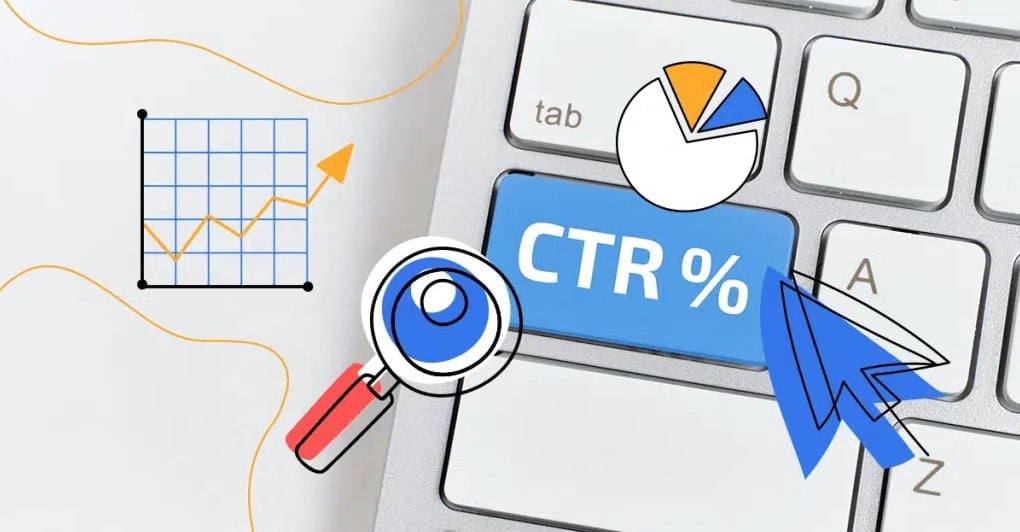
Click Through Rate (CTR) refers to the percentage of clicks a listing get in relation to the impression. General search engines such as Google or even specialized search engines like Amazon uses CTR as a ranking factor. SEOs may employ the service of bots to click on a specific listing on the Search Engine Result Pages (SERPs) in a bid to improve the ranking of such pages artificially. This is considered a fraud and a trick to game the search engine ranking system.
3. Social Media Click Fraud

This type of click fraud is carried out on social media networks. Engagement is a metric to go viral on social media and social media marketers. This type of click fraud occurs when clicking bots, botnets, or even click farms are used to artificially inflate the engagement count, such as likes of a post, with the intention of inflating the engagement.
The popular social media platforms have systems in place to check this kind of fraud, but so far, the bad guys have always found a way to bypass the checks and still reap the reward of this kind of fraud.
Why Bad Actors Engage in Click Fraud
What are the reasons why someone will want to engage in click fraud? Let's take a look at some of the popular motivations for engaging in click fraud.
-
Earn Ad Revenue

This is the number one reason why malicious actors engage in click fraud. They will set up a site and use a traffic bot to inflate their traffic count. They will meet the traffic requirement for joining ad networks. Now with ads placed on their site, they use click bots or farms to click on the ad and earn the revenue in place for them. This is highly fraudulent, and all major ad publishers do have systems in place to check click fraud. But these guys are sophisticated in their approach. Some of them even trick the likes of Google AdSense with all of their checks.
-
Hurt Competitors
There are two ways malicious actors on the web can use click fraud to hurt their competitors. The first way is by draining their ad spending. If a competitor sets up an ad for real people, they click on the ad without carrying out the specific tasks required, such as purchasing or even registering. By doing this, a large amount of money is wasted as no conversion is recorded — this, done to the extreme, can even put a competitor out of business.
The second way this can be used is on ad publishers. If you publish third-party ads on your site, your competitor can engage in click fraud to discredit your site. Most businesses will stop advertising on your site if all they get are clicks with no conversion. This is put sites that depend solely on ads out of business.
-
Improve Search Engine Ranking
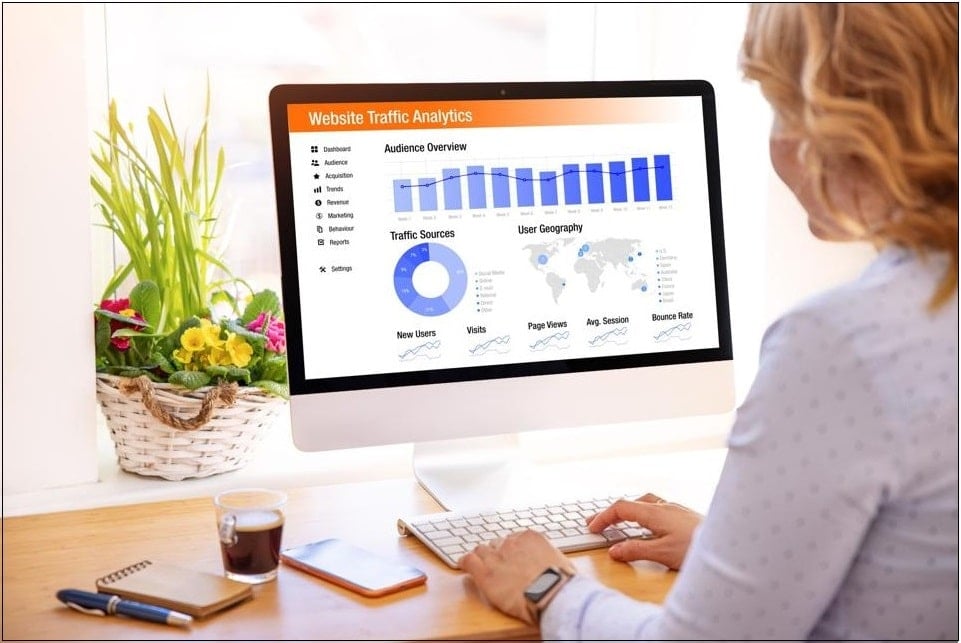
CTR, as mentioned above, is one of the ranking factors considered by most search engines. While the weight it carries depends on the platform, there is no denying that it is. SEO utilize this to artificially make their sites look more appealing than they are. This is because more people clicking their listing means their listing is more relevant to a search term than the others getting fewer clicks. You will see ads for this kind of service if you visit any of the popular Internet marketing forums.
-
Contaminate Site Analytics
Another effect of click bots, botnets, or farms is that they contaminate the analytics of a site. Web traffic data is useful for decision-making, and a site that has been a target of click fraud need not use the traffic data for making decisions. This is because the data you will be looking at will be contaminated, and by so doing, you might make the wrong decision because of the source of data. It is, for this reason, web administrators are advised to use the best site traffic analytic tools to minimize bot traffic count presence on their site. For now, Google Analytics is one of the good solutions.
-
Reduce the Quality of Content on Social Media Platforms
By design, only stellar content on social media should make it to the top and go viral. However, with click fraud introduced into the mix, the odds are no longer in their favor. This is because Mediocre content is clicked and engaged with at a rate that they end up getting favored by the algorithm of social media. If this is done consistently and on a large scale, it could mess up with the quality of content recommended to users. You can already see that on some of the social media platforms.
How to Detect Click Fraud

How do you know you are a victim of click fraud? There are some pointers you need to look at to uncover this fraud. Let's take a look at some of these pointers below.
1. Unnatural Spike in Ad Impressions and Click
As an ad publisher, the moment you notice a sudden spike in your ad impression and click, you need to pause things and take a closer look. Usually, traffic does not suddenly spike too high, except you must have done a campaign or one of your content has gone viral to warrant such. If there is nothing of such and you can’t seem to identify where the sudden spike in ad impressions and click is coming from them, just know that you ad has been victim of click fraud.
2. No Accompanied Conversion
This pointer goes hand in hand with the first one. Usually, when there is an increase in your ad impression and click, it is only natural that conversion follows suit. When this is not the case, and the number of conversions you get still remains fairly the same but impression and clicks have spiked, then you can be sure without mincing words that you are under a click fraud attack. This is because, with click fraud, the bounce rate is high as the bots will only click and bounce off the page — missing completely.
3. Suspicious Traffic Location
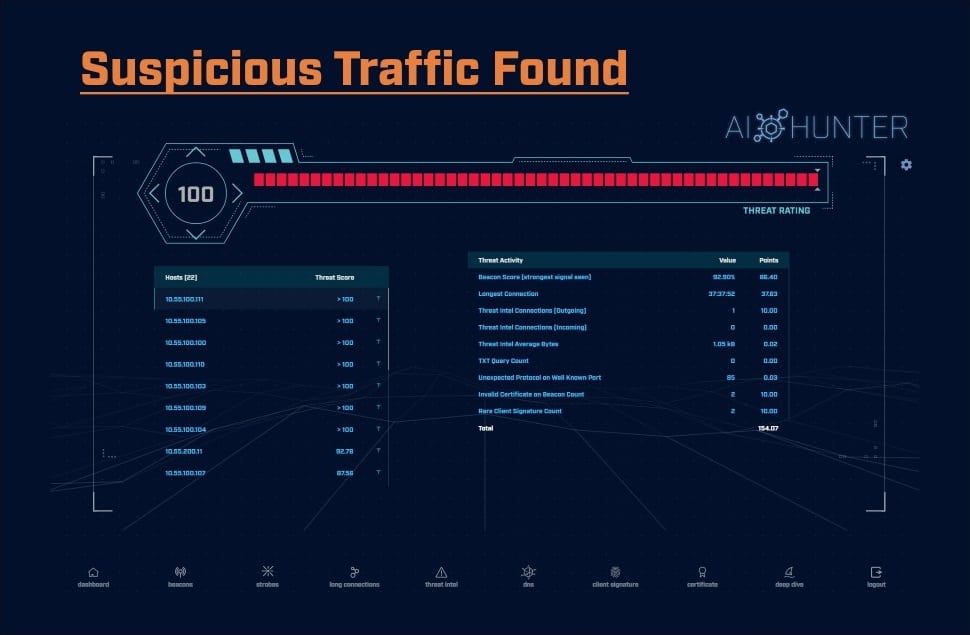
This method of detecting click fraud only works for click fraud attacks that were not planned well. For well-planned and executed click frauds, you can’t use traffic sources to detect their activities as they use residential proxies from specific countries to hide their footprint and generate more revenue. However, for the poorly planned ones that utilize click farms, the traffic source will be from third-world countries with low wages.
4. Low-Quality Engagement
This method is particular to social media networks. The surest way to identify posts that have been artificially made to go viral using clicks and faked engagement is to look at the engagement. Usually, the number of likes will be high, while real engagement that requires human thoughtfulness is low. Comments on this kind of post will either be small, or the comment will be generic, or nonsensical. As a social media user, there is no point in interacting with such content.
How to Prevent Click Fraud
From the above, you can tell the effect click fraud can have on your finances, web analytics, and even business as a whole. As someone engaged in ad publishing, you need to be wary of this and try to prevent it. Below are some of the ways you can prevent click fraud.
-
Monitor Ad Performance Closely

There is no better way of preventing yourself from click fraud than monitoring your ad closely. You see, ads are set up with a goal in mind, which is conversion. The moment there is a spike in impression and click but no conversion, you have got to pause the campaign immediately. Not doing so will cost you money and drain your ad campaign. This method is at number one because preventing click fraud can be quite difficult, even with the use of click fraud prevention tools.
-
Target Specific High-Value Sites
Some ad services, such as Google AdSense, allow you to specify the site you want your ad to show. This feature is incredibly useful for preventing click fraud or protecting yourself against the practice. Google AdSense is one of the targets of click fraud, and as such, making sure your ad only shows on high-value sites you trust will protect you. However, you need to know that the higher the value and quality of a site, the more its ad spaces are competitive, thereby driving the cost high.
-
Advertise in Specific Countries
It is good to target a global audience for your ad. But while at it, just know that traffic from certain countries does not convert. Except your ad is relevant to some of these third-world countries with low wages, you are better off keeping them off-target. This is because click farms originate from these regions, as it can be profitable for them because of their low wages. However, if these countries form part of your audience, you will need to keep your bid rate low while keeping a close eye on performance to know when to put a hold.
-
Monitor your Competitor

Another way to prevent click fraud is to keep an eye on your competitors. You need to know the keywords you are interested in and those you are competing against. Remember we mentioned earlier that your competitors might be the ones performing click fraud to drain your ad budget? This is why you need to keep an eye on them. There are tools you can use to find out the clicks that originate from potential competitors. One of such tool is the ClickForensics tool.
-
Use Click Fraud Prevention Software
After all, is said and done, you will need a form of true protection, and only security tools with click fraud protection will help you with that. Some of these tools make use of a combination of machine learning, close monitoring, and some other in-house methods to detect click fraud. There are a good number of them available, each having its pros and cons and what it can best be used for. Some of the popular options in this regard include ClickCease, PPC Shield, Oracle, and CHEQ.
More Click Fraud Prevention Tips:
- Use fraud detection tools like IP address filtering, geolocation targeting, and browser fingerprinting to detect and block fraudulent clicks.
- Implement click fraud protection measures, such as using unique URLs for each advertiser and tracking the source of clicks.
- Regularly monitor user behavior and performance data to identify any anomalies or spikes in cost.
- Lean on specialized services that automatically identify signs of click fraud, such as Sift Science.
- Select industry-specific keywords and apply negative match to limit exposure to fraudulent clicks.
- Establish and adhere to a budget for PPC advertising to limit financial exposure.
- Stay informed about the latest tactics used by fraudsters and regularly update your fraud detection methods accordingly.
FAQs About Click Fraud
Q. Is Click Fraud Illegal?
Technically, there is no law in most countries of the world that makes click fraud illegal. Click fraud to generate fraudulent revenue is illegal, and your would land yourself in legal trouble. However, away from that, the law isn’t really clear.
One can use click fraud to artificially improve his ranking on social media and get his content to go viral on social media platforms. While these aren’t allowed by the respective target platforms, there is usually no legal implication in doing it. That is why you need to take it upon yourself to stay protected.
Q. What is the Difference Between Click Fraud and PPC Fraud?
Many people use these two terms interchangeably. While there is nothing wrong with this, there are situations where you need to be specific. Click fraud is actually the general term for online clicks with no intention of carrying out the required action, which is done for a fraudulent purpose.
PPC fraud, on the other hand, is more specific to Pay-Per-Click Advertising. PPC fraud will almost always lead to the loss of money for the advertiser. In the case of click fraud, there are cases where no financial loss is incurred.
Q. Is Click Fraud Common?
There is a reason you need to be wary of click fraud — it is more common than you think. PPC fraud is quite profitable for revenue fraudsters and also serves as a lethal tool for competitors to waste your ad budget.
In fact, it has been stated that about 14 percent of clicks on PPC ads are fake and done for fraudulent purposes. This is the reason you should put in place measures to safeguard your ad campaign from getting ruined by click fraud.
Conclusion
There is no doubt that click fraud is an evil that show be taken out of the Internet. Contrary to this assertion, more and more fraudsters are engaging in it, which should give you a reason to care. If you are an advertiser or an ad publisher, it is important you are aware of this and protect your site again it. While preventive software can help a long way, there are instances that manual investigation will do better work, especially if you keep an eye on your ad impression, click, and conversion rate.



